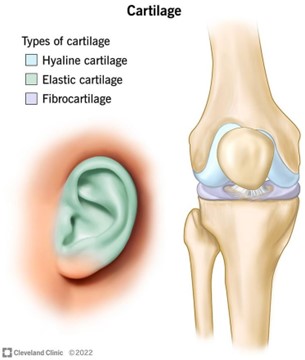A nurse is reinforcing teaching with an older adult client about physical changes that occur with aging. Which of the following should the nurse include as an expected age-related change?
Increased nail growth due to buildup of calcium deposits
Increased perspiration due to overproduction by the sweat glands
Increased cardiac output due to weakened heart walls
Increased joint stiffness due to loss of elasticity in joint cartilage
The Correct Answer is D
d. Increased joint stiffness due to loss of elasticity in joint cartilage.
Explanation:
The correct answer is d. Increased joint stiffness due to loss of elasticity in joint cartilage.
When teaching an older adult client about age-related changes, it is important for the nurse to provide accurate and relevant information. Joint stiffness is a commonly experienced age-related change that occurs due to the natural loss of elasticity in joint cartilage. As people age, their joints may become stiffer and less flexible, making movements and activities more challenging.
Option a is not the correct answer. Increased nail growth due to the buildup of calcium deposits is not an expected age-related change. Nail growth is primarily determined by factors such as genetics, overall health, and nutritional status, rather than calcium deposits.
Option b is not the correct answer. Increased perspiration due to overproduction by the sweat glands is not an expected age-related change. In fact, older adults may experience a decrease in the production of sweat, which can make them more susceptible to heat-related illnesses and dehydration.
Option c is not the correct answer. Increased cardiac output due to weakened heart walls is not an expected age-related change. With aging, the heart muscles may become stiffer and less efficient, leading to a decrease in cardiac output rather than an increase.
By focusing on the expected age-related change of increased joint stiffness due to loss of elasticity in joint cartilage, the nurse can provide accurate information and help the older adult client understand and manage this common aspect of the aging process.

Nursing Test Bank
Naxlex Comprehensive Predictor Exams
Related Questions
Correct Answer is A
Explanation
Hyponatremia refers to a lower-than-normal level of sodium in the blood. Sodium is an essential electrolyte involved in various bodily functions, including maintaining fluid balance and transmitting nerve impulses. When sodium levels are low, it can lead to fluid imbalances, affecting the function of muscles and nerves. Muscle cramps are a common manifestation of hyponatremia and occur due to alterations in muscle excitability and contractility.
Constipation: Constipation is not typically associated with hyponatremia. It can occur due to various reasons, such as dietary factors, lack of physical activity, or other medical conditions, but it is not a direct consequence of low sodium levels.
Hypertension: Hyponatremia is not usually associated with hypertension (high blood pressure). Hypertension can be caused by several factors, including genetics, lifestyle, and certain medical conditions, but it is not directly related to low sodium levels.
Blurred vision: While blurred vision can occur in some medical conditions, such as diabetes or certain eye disorders, it is not a typical finding in hyponatremia. Visual disturbances are not a direct consequence of low sodium levels.

Correct Answer is D
Explanation
The nurse should expect the provider to discontinue phenelzine 2 weeks before starting fluoxetine treatment. Phenelzine is a monoamine oxidase inhibitor (MAOI) and should not be taken with fluoxetine, which is a selective serotonin reuptake inhibitor (SSRI). Taking these two medications together can cause a dangerous drug interaction known as serotonin syndrome.
a) Levothyroxine is a thyroid hormone replacement medication and does not interact with fluoxetine.
b) Acetaminophen is a pain reliever and does not interact with fluoxetine.
c) Simvastatin is a cholesterol- lowering medication and does not interact with fluoxetine.

Whether you are a student looking to ace your exams or a practicing nurse seeking to enhance your expertise , our nursing education contents will empower you with the confidence and competence to make a difference in the lives of patients and become a respected leader in the healthcare field.
Visit Naxlex, invest in your future and unlock endless possibilities with our unparalleled nursing education contents today
Report Wrong Answer on the Current Question
Do you disagree with the answer? If yes, what is your expected answer? Explain.
Kindly be descriptive with the issue you are facing.
